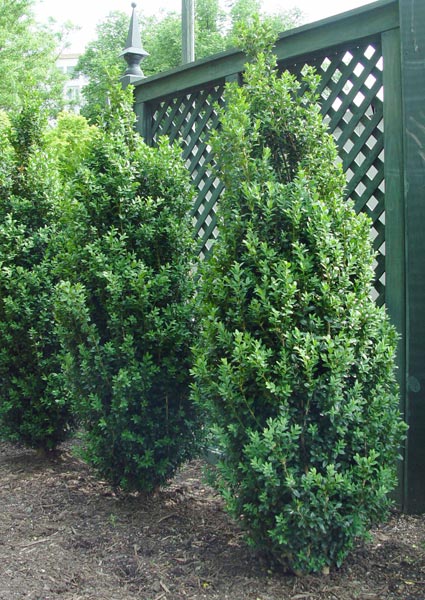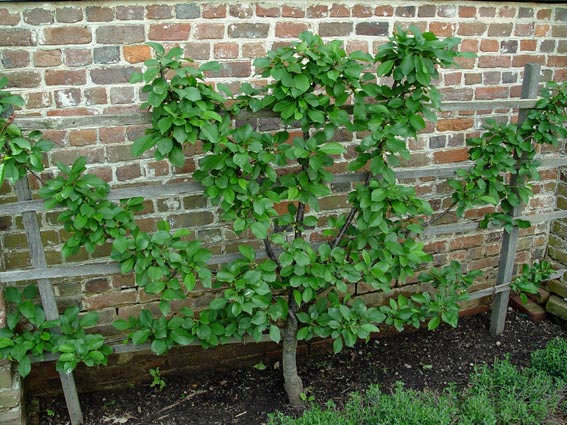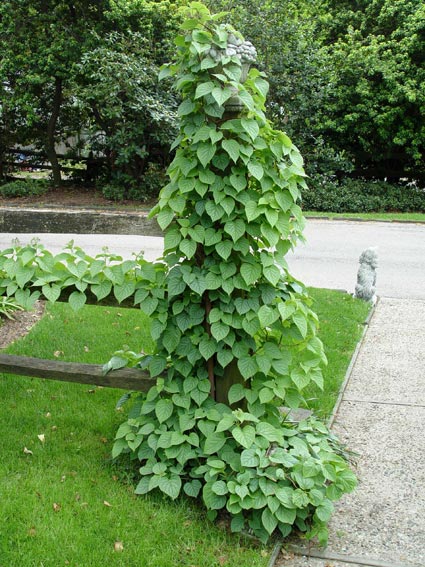How it Works: Preen Garden Weed Preventers
Here's how our Garden Weed Preventers prevent weeds before they even sprout rather than killing them after they’ve already had the chance to grow.
Most yards have at least a few “skinny” spots – those tight areas between buildings, between a sidewalk and the house, or maybe along a garage wall or fence. If you install a plant that wants to grow 8 feet wide when you’ve only got 2 or 3 feet to work with, you’re setting yourself up for years of unnecessary pruning work.
A better idea for narrow-space gardening is to select skinny plants in skinny spaces, also known as the “right plant, right place” method. Horticulturists and plant breeders have introduced plenty of slim, trim plants for the narrowest of spots.
For something permanent, start with one or more narrow, upright evergreens. Some of these grow into living green columns, scarcely no more than 2 feet across even 20 years down the road. Among the tightest are the columnar forms of the common soft-needled yew (Taxus). The varieties ‘Beanpole’ and ‘Flushing’ grow like green tubes and are easy to keep in the 8-foot by 2-foot range with a single annual shearing. Theygrow in sun or shade down to Zone 4.
Columnar Japanese plum yew ‘Fastigiata’ (Cephalotaxus harringtonia). has a similar look to the soft-needled yew and is slightly less winter hardy (Zone 6 and warmer), but a good option for gardeners plagued by deer.
In broad-leaf evergreens, look to columnar boxwoods and Japanese hollies (both hardy to Zone 6).‘Dee Runk’ and ‘Green Tower’ boxwoods are two of the nicest, newest narrow boxwoods that maintain a dense growth in the landscape. ‘Graham Blandy’ is a veteran pole-type boxwood that’s still fairly common in the horticulture trade. ‘Sky Pencil’ Japanese holly (Ilex crenata) is also often sold in garden centers, although its long-term habit isn’t as full as ‘Dee Runk’ and ‘Green Tower’ boxwoods. Both boxwoods and Japanese hollies do well in a bit of afternoon shade but also in full sun with good soil and adequate water.

© George Weigel
Plenty of narrow and slightly more pyramidal evergreens are available that can be kept to 4 feet around or less. In sunny spots, look to upright junipers, such as the grayish-green ‘Gray Gleam', the green-needled ‘Spartan’ or ‘Hetzii Columnaris’, or the slender blue-needled ‘Skyrocket'. Some are winter-hardy to Zone 3. In sun or part shade, Hinoki false cypress (Chamaecyparis obtusa) is one of the most versatile and durable plant choices. Most cultivars grow slowly into irregular pyramids that need little to no pruning. (Zone 5). Try ‘Gracilis’ or ‘Ericoides’ for taller, faster-growing Hinoki options or compact ‘Nana Gracilis', ‘Torulosa’, or ‘Tetragona Aurea’ when you want less height (6 feet) and slower growth. The common arborvitae is another landscaping option that offers particularly narrow-growing choices such as ‘Degroot’s Spire’ and the compact ‘Holmstrupp,’ a slow-grower that makes its way up to about 6 feet tall and 3 feet around in 12 years. (Hardy to Zone 2.)
For an evergreen that also bears red berries in fall, try the new evergreen holly ‘Red Beauty’ (Ilex × ‘Rutzan’). This slow-growing pyramidal holly is a female that produces large, showy red fruits on the ends of its stems but only when pollinated by a suitable male holly nearby. (Hardy to Zone 6.)
Very few flowering shrubs come in slender forms, but through the magical technique of “espaliering,” most can be trained to fit tight spaces. Espalier is a form of pruning in which plants are trained to vertical forms by tying selected branches to frames and removing the rest. The result is a flowering plant that grows in an upward sheet or network of stepped arms, depending upon whether you shear or prune branches individually. Once the plants are trained to form, the framework can be removed. Even small trees can be espaliered to give color and life to tight spaces without taking up more than 1 or 2 feet of width. Plants such as fruiting apples and pears, firethorn (Pyracantha), and climbing hydrangea (Hydrangea anomala petiolaris) are common subjects.

© George Weigel
Planting vines is an easy route if you don’t mind them growing right onto walls. Pick vines that self-climb, such as climbing hydrangea (Hydrangea anomala petiolaris, Zone 4), Boston ivy (Parthenocissus tricuspidata, Zone 3), or Japanese hydrangea vine (Schizophragma hydrangeoides, Zone 5). If growing on the walls isn’t appealing, erect a trellis, lattice panel, or netting so the vining branches can climb their way up to the height you like. Climbing roses and honeysuckle are good plant choices for sun, clematis is one of the showiest vining families for sun or part shade, and the Rex begonia vine (Cissus discolor) is a colorful but under-used winter-tender twiner for shadier spots.
If you don't care for the permanence of woody plants, consider tall upright-growing flowers. Try tall tropicals like cannas, crotons, and tropical hibiscus for striking color; annual sunflowers, cosmos, and Mexican sunflowers are dramatic, and easy to raise from seeds. Tall hardy perennial choices include the hardy hibiscus, iris, boltonias, hollyhocks, goats' beard, Japanese anemones and Russian sage.
Don't be saddled with a space you can't enjoy, just plant some "skyscraper" plants.

© George Weigel